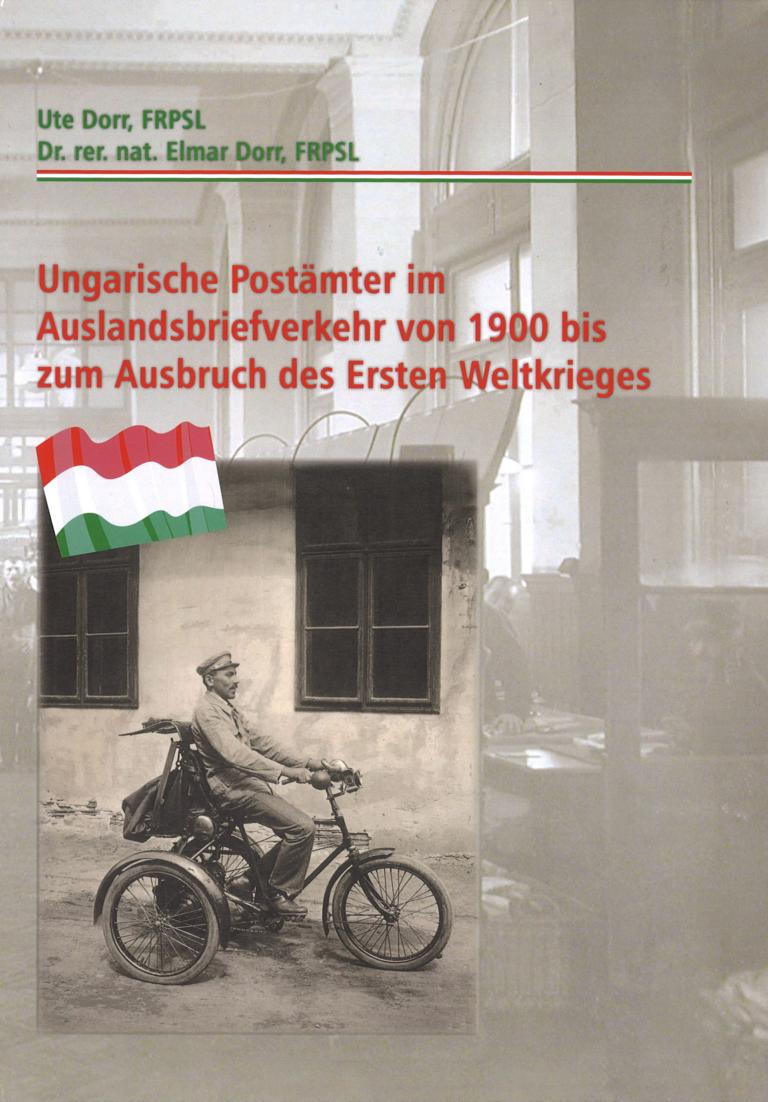This book is a very welcome addition to the literature on Hungarian postal history, and it also makes a valuable contribution to understanding the social and economic history of Hungary during the last years of peace in the old kingdom of Hungary before the cataclysm. In recent years the attention of researchers has tended to concentrate on Hungary’s classic period (1867-1900) leaving the subsequent years, neatly defined by the ‘Turul’ stamp issue (in use 1900-1916), somewhat neglected. Elmar and Ute Dorr have now taken a major step towards redressing the balance by shining a bright light on Hungary’s international mail services in the early years of the 20th Century and, through extensive use of imagery, on Hungarian society at that time.
The focus is an the handling of mai! traffic in both directions between Hungary and other countries, including Austria which by that time was a separate jurisdiction within the Dual Monarchy. The book beginn with a lengthy survey of how postal services operated in Hungary after 1900. lt draws attention to Budapest’s rote as a hub for international mail routes in Europe and reviews many different factors that had an important impact on postal development including currency reform, the impact of decisions taken at the six UPU Congresses held up to 1906, Post Offices abroad, railway and ship mail services including the Orient Express service, and the evolution of the postmarks used in Hungarian Post Offices. lt then looks at examples of foreign mail in two sections. The first illustrates mixed frankings of the old Kreuzer and new Filier currencies an outgoing mail to other European countries during the nine-month concessionary period in 1900 when the use of both currencies was still permitted. The second part, which forms the heart of the book and fills 237 pages, looks at outgoing mai! franked with the Filier currency only to all inhabited parts of the world, as well as at incoming mail to Hungary between 1900 and 1914.
The range of mail described is impressive and the illustrations bring the subject to life. Both the front and rear sides of many items are illustrated in full colour creating the illusion that the reader is leafing through a collection. The range of images from around the world also makes for a visual delight. In each case the postal rates are expiained and the Post Office(s) in Hungary through which the mail was handied is identified, even when no receiving postmarks were applied. To heip the reader find a postmark, there are lists filling 56 pages with colour images of all the Hungarian postmarks on the items shown as well as an index of the Post Offices that used them. Thus, this book has much that is of interest for marcophilists, as well as for postal historians who study routes and rates and for aesthetes who like to use imagery to describe atmosphere in telling a story.
The book is written entirely in German but, with the help of its prodigious use of images, it is not difficuit for non-German speakers to follow. lt exudes the authors’ tremendous knowledge and passion for the subject, which can be felt on every page. The versatility with which information is used also goes far beyond the ordinary. Given its range and breadth, it is not surprising to find some details where correction is needed, but they are minor and do not detract from the overall achievement of bringing this era in Hungarian philately to life. I recommend it as a valuable source of information for any postal historian — or indeed to any historian — who is interested in understanding the interactions between Central Europe and the wider world during the twilight of the Empires.
Dr Elmar Dorr FRPSL and Ute Dorr FRPSL, 2023. 410pp, hard back, full colour illustrations; ISBN 978-3-949591-02-0, available from Ute Dorr, utedorr@web.de for €79 plus postage and packing (UK and Europe €14, other countries on request), payment via Paypal.
Bill Hedley


